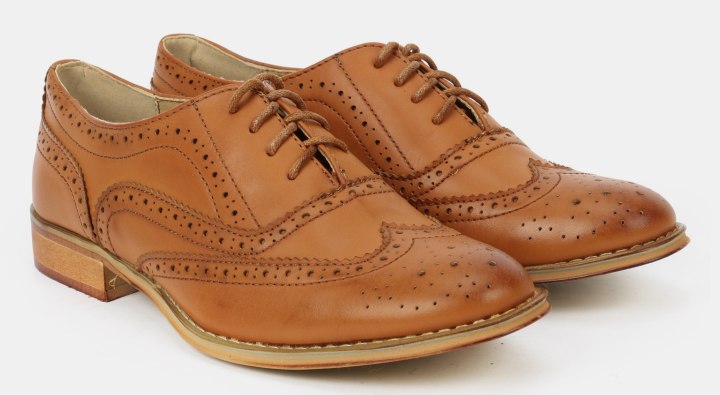How to Choose and Combine Men's Shoes (2)

Previous Page
You will also find texture in Casual shoes by virtue of different types of leather, though generally, the more Casual the shoe the less glossy the finish will be. Some examples of common Casual leather types are hides (of buffalo, wildebeest, ostrich, etc.) and the standard leather subtypes (snakeskin, alligator, etc.) which may impart a specific texture, or simply a subtle pattern in the look of the leather’s grain.
Sporty Shoes
The Sporty category covers all of the shoes that serve a purpose in some physical activity: running shoes, cross-trainers, hiking shoes, basketball shoes, toners, etc. It is virtually impossible to try to list all the specific types of Sporty shoe, and many of the Sporty shoes can be worn with many Casual looks at the lower end of the Casual spectrum.
Sporty shoes are generally paired with athletic wear, but in Casual looks, you can easily pair Sporty shoes with khakis, and lighter earthy tones, beige and tan pants, even olive drab pants. Particularly those pants of a more casual cut and style – such as cargo pants – make good pairings with Sporty shoe styles. Sporty shoes are also almost universally required when wearing short pants of any stripe. (There may be some dressier-style short pants, but these still fall under the category of Casual and need at least a Casual shoe, if not a Sporty one.)
Final Tips:
Now that we’ve discussed the categories of shoes, it’s time to look at some general tips for choosing your shoes and pairing them with the rest of your clothing ensemble.
Shop for Your Wardrobe, Not for a Look
First of all, never look at shoe-shopping without taking into account the clothes that you already own. Given the fact that most men have far fewer shoe choices in their closet than the rest of the clothing options, it’s important that you make sure you can add something that will be versatile.
Unless you are shopping for a specific purpose (finding a pair of shoes to wear with your tuxedo) you have to keep the clothes that you will be wearing the shoes with in mind. It would be a bad thing if you wanted new Dress-Casual shoes for work and selected brown shoes when the four suits you own are black, navy, brown and dark grey. (The only suit the brown shoes would work well with would be the brown suit, while black shoes could be worn with all of them.)
When in Doubt, Go Darker
When pairing shoes with a look, a great rule of thumb is to choose a shoe that is darker than the pants or suit with which you are pairing it. Shoes that are lighter than the pants/suit being worn was only popular in the 70s and wasn’t a very good look back then. Doing that today would result in a very dated, unflattering look.
Keep your color families together: black is neutral and can be paired with most anything, while browns should be matched with earth tones, and tints and colors need to include corresponding elements in the rest of the ensemble and a basis of neutral shades to balance them.
Jeans are Truly Versatile
When wearing jeans, you can go from the low-end of Dress-Casual, to Sporty with your shoe choices. You should let the rest of the look help you decide on the shoe. A pull-over polo or golf shirt would pair well with loafers or casual suede lace-ups, while flannel or western style shirts might call for boots. If you’re truly neutral in the upper body garments – jeans and a tee shirt – you can pair the look with pretty much anything Casual to Sporty.
How to Combine Socks
Aside from the fact that most home laundry appliances require the sacrifice of at least 3-5 socks in a given year or they will break down frequently, socks are also important in the great shoe debate. You should never think of socks as HAVING to match with your shoes. But the sock should fit in with your ensemble. This could mean everything from a continuation of the black in a formal Dress look, to an extra splash of color in the Dress-Casual look. It may even be that tie-in element that brings your look together – such as adding a pair of Argyle socks to your penny loafers with your khakis and oxford-cloth shirt and sweater combo. Just remember that with Dressy looks, your socks should be conservative continue the formal theme.
©Greatestlook.com
Related Posts:
How to shine your shoes
Choosing the right tie